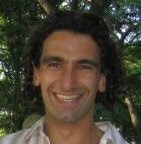The university issued a press release this morning about my research into how shifting away from meat production could help alleviate the pollution that causes the "Dead Zone" in the Gulf of Mexico. Take a look! The paper - "Surf or turf: A shift from feed to food cultivation could reduce nutrient flux to the Gulf of Mexico" - was published (online early) last week in the journal Global Environmental Change.
Why the shift in subjects? For my PhD thesis, I studied how the climate and land use (forest? corn-soybean rotation? wheat?) impact the loading of nitrogen into the Mississippi River and eventually into the Gulf of Mexico. The nitrogen in Mississippi River waters fuels the development of a large hypoxic zone, an area of extremly low-oxygen waters, in the Gulf each summer.
Among the conclusions from that research, is that the majority of the nitrogen comes from fertilizer applied in the central US, largely to corn. Most of the corn and other grains grown in the central US are sold for animal feed. It got me to thinking about the old adage that "eating closer to the sun" is better for the environment. The argument is that takes less energy (and causes less pollution) to raise a gram of vegetable protein, than beef protein, because of the various inefficiencies in the animal production chain.
I decided to do a quantitative test. Could shifting from feed to food production reduce nitrogen losses enough to minimize the size of the hypoxic zone? From there, I looked at a shift in diet and food production could be integrated with a more feasible nutrient management policy. The results was this study... and the end of years as a regular meat-eater.
Monday, July 10, 2006
Surf or turf?
Subscribe to:
Post Comments (Atom)



No comments:
Post a Comment